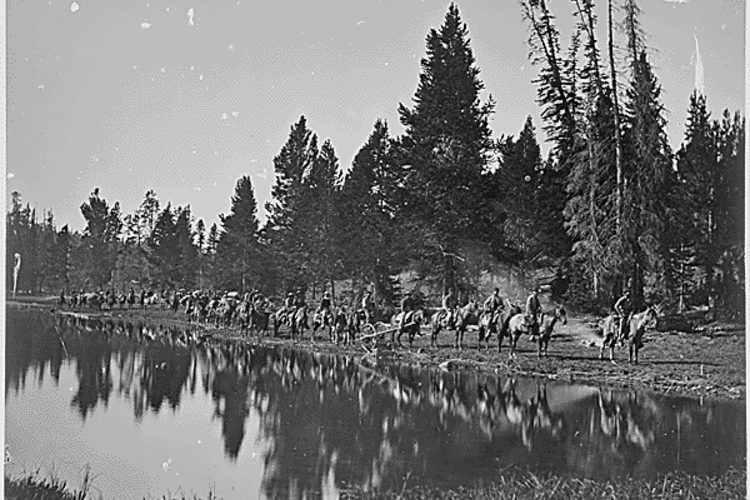The First National Park: Yellowstone and the Hayden Survey
In spring 1871, scientist, physician, and explorer Ferdinand V. Hayden (1829–87) prepared for an expedition in Wyoming and Montana Territories to survey the region around the Missouri, Snake, and Yellow Stone Rivers. Other expeditions into the area preceded Hayden’s, but Hayden is credited with spurring Congress to make Yellowstone the first National Park.
An experienced field scientist, he was among the first scientists to identify dinosaur fossils in the United States during his first expedition to the Upper Missouri region in 1852. After volunteering to serve as a physician in the Civil War, Hayden returned to scholarly pursuits and was a professor of geology and mineralogy at Pennsylvania State University when Congress appropriated $40,000 for him to survey the Yellowstone region.
On June 1, 1871, after gathering final provisions, Hayden and his team departed Fort D. A. Russell in Wyoming Territory for Yellowstone. For six months the expedition slowly and carefully surveyed the land. Hayden reported gathering “extensive collections of geology, mineralogy, botany, and all departments of natural history.” He noted they were in an “ideal open-air laboratory” that “provided unique opportunities for observation and study.” Photographer William Henry Jackson and painter Thomas Moran captured the rock formations, canyons, mountains, hot springs, and waterfalls that Yellowstone is known for through sketches, watercolors, and photographs.
After his survey, Hayden traveled to Washington, DC, to report his findings and advocate for the protection of Yellowstone’s abundant natural resources before Congress and the Department of the Interior. Jackson’s photographs—featured here for the 150th anniversary of Hayden’s expedition—along with Moran’s artwork served as especially “powerful testimonials” that transported the beauty and geography of Yellowstone across 2,000 miles to Washington, DC. The following spring, on March 1, 1872, Congress established the first National Park, making Yellowstone the first federally protected land.
Many of the landmarks and features of Yellowstone were named for the White explorers and scientists who surveyed the area in the 19th century. In recent years, Native American tribal leaders, with the support of more than two dozen tribes, have led efforts to rename some landmarks to reflect and honor the indigenous people who occupied the land for centuries.
For more information on the Hayden Survey and Yellowstone, visit:
